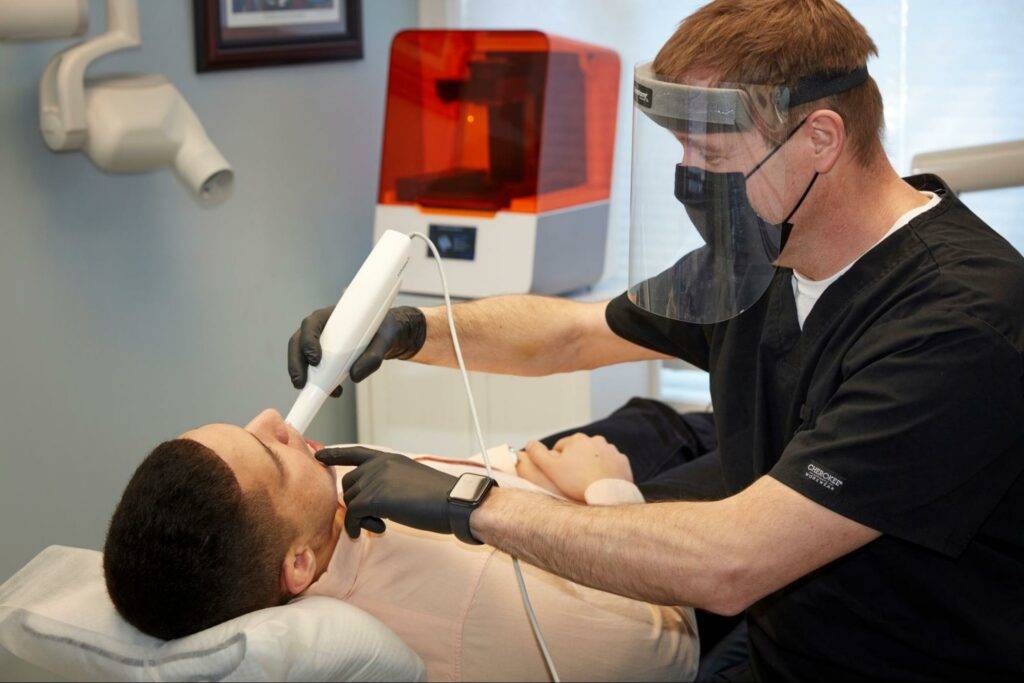The field of orthodontics has undergone significant advancements in recent years, particularly with the integration of digital workflows. These technological innovations are transforming traditional practices, offering numerous benefits while also presenting unique challenges.
Understanding both sides is crucial for orthodontists looking to stay competitive and deliver superior patient care.
The Benefits of Digital Workflows in Orthodontics
Enhanced Treatment Planning and Precision
Digital workflows allow for more accurate treatment planning. Advanced imaging techniques, such as 3D scanning, provide detailed visuals of a patient’s dental structure. This enables orthodontists to plan treatments with greater precision, leading to improved outcomes.
The ability to visualize and simulate tooth movement before treatment begins allows for better communication with patients and more predictable results.
Improved Patient Experience
Digital tools, like intraoral scanners, replace traditional, uncomfortable methods such as physical impressions. These scanners offer a more comfortable, quick, and accurate process, enhancing the overall patient experience.
Additionally, digital workflows allow for the creation of more customized appliances, such as clear aligners, tailored to the specific needs of each patient.
Streamlined Workflow and Efficiency
Digital workflows streamline various stages of treatment, from diagnosis to the creation of orthodontic appliances. By reducing the need for physical models and manual adjustments, orthodontists can save time and reduce the potential for human error.
This efficiency allows for faster turnaround times and the ability to manage a higher volume of patients without compromising the quality of care.
Better Communication and Collaboration
Digital platforms facilitate better communication between orthodontists, labs, and patients. Cloud-based systems allow for easy sharing of patient data, treatment plans, and progress updates.
This collaboration is essential for multidisciplinary cases and ensures that all parties involved are on the same page, leading to more coordinated and effective treatments.
Cost-Effectiveness in the Long Run
While the initial investment in digital technologies can be high, the long-term benefits often outweigh the costs. Digital workflows reduce the need for physical materials and manual labor, lowering operational costs over time.
Additionally, the increased efficiency and precision can lead to fewer revisions and adjustments, further reducing costs.
Challenges of Integrating Digital Workflows
High Initial Investment
One of the most significant challenges is the cost of implementing digital technologies. The purchase of scanners, software, and other digital tools requires a substantial upfront investment.
Additionally, there are ongoing costs for software updates, maintenance, and training, which can be a financial burden for smaller practices.
Learning Curve and Training
Adopting new technologies requires time and effort to learn and master. Orthodontists and their teams must undergo extensive training to effectively use digital tools.
This learning curve can initially slow down workflow and affect productivity. Continuous education is necessary to stay updated with the latest advancements and ensure the technology is used to its full potential.
Integration with Existing Systems
Integrating new digital workflows with existing practice management systems can be complex. Compatibility issues between different software and hardware can lead to inefficiencies and frustration.
It’s essential to choose digital solutions that can seamlessly integrate with current systems or be prepared to overhaul outdated infrastructure, which can be costly and time-consuming.
Dependence on Technology
With the reliance on digital tools comes the risk of technological failures. Software glitches, system crashes, or hardware malfunctions can disrupt workflows and delay treatments. It’s crucial to have robust support systems and backup plans in place to minimize downtime and ensure patient care is not compromised.
Data Security and Privacy Concerns
As digital workflows involve storing and sharing sensitive patient data, maintaining data security and privacy is a critical concern. Orthodontic practices must comply with regulations like HIPAA in the U.S. and GDPR in Europe to protect patient information.
Implementing strong cybersecurity measures and training staff on data protection protocols is essential to prevent breaches and maintain patient trust.
Integrating digital workflows in orthodontic practice offers numerous benefits, from improved precision and patient experience to enhanced efficiency and cost-effectiveness.
However, the challenges of high initial investment, learning curves, system integration, dependence on technology, and data security cannot be overlooked.
By carefully considering these factors and planning for a smooth transition, orthodontic practices can successfully embrace digital workflows and remain at the forefront of modern dentistry.
As digital technology continues to evolve, staying informed and adaptable will be key to harnessing its full potential and delivering exceptional patient care.


